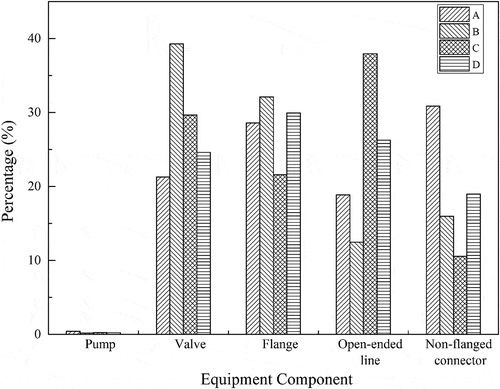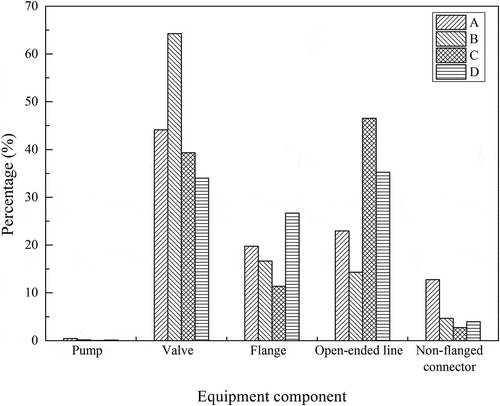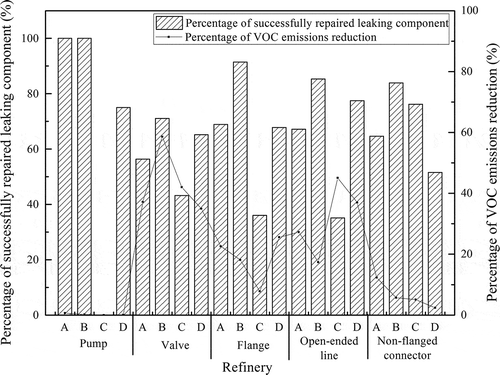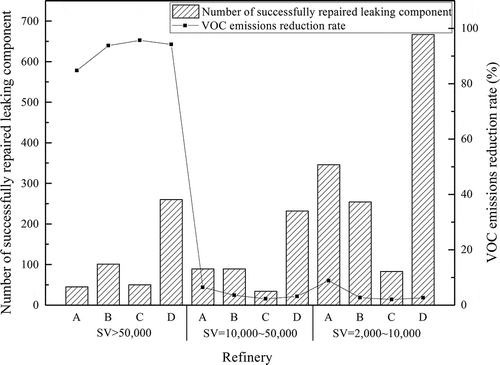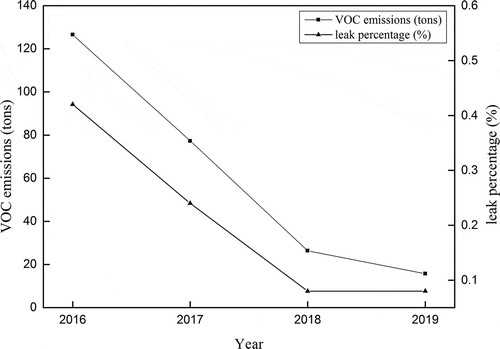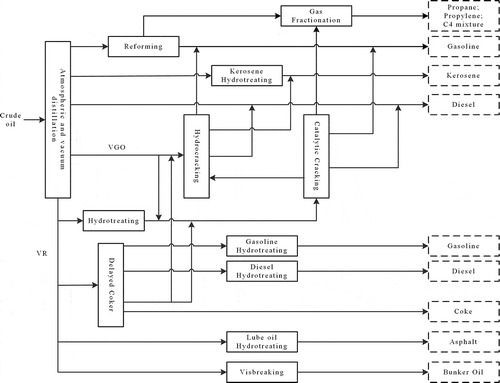Figures & data
Table 1. Basic information of four refineries.
Table 2. Equipment leak rate for petroleum equipment components.
Table 3. Numbers of equipment components in different refineries.
Table 4. Numbers of leaking components in different refineries.
Figure 3. Distribution of high leaking components in total leaking components in different refineries.
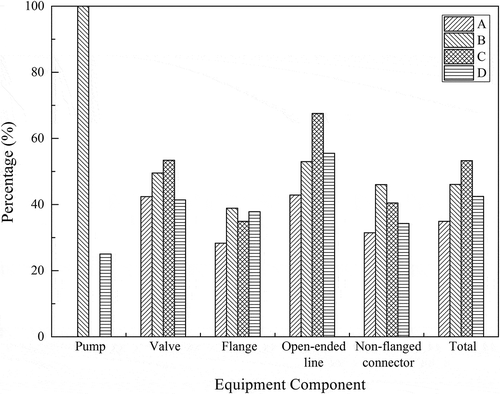
Table 5. VOC emissions from all equipment components (unit: tons/year).
Table 6. VOC emissions from leaking components (unit: tons/year).
Table 7. Different proportion of VOC emissions.
Table 8. Common repair measures for leaking components.
Table 9. Numbers of DOR components in different refineries.
Table 10. Number of leaking components and VOC emissions after repair.
Table 11. Capacity of processing units (104 tons/year).
Table 12. Costs distribution of LDAR program for a medium refinery.


